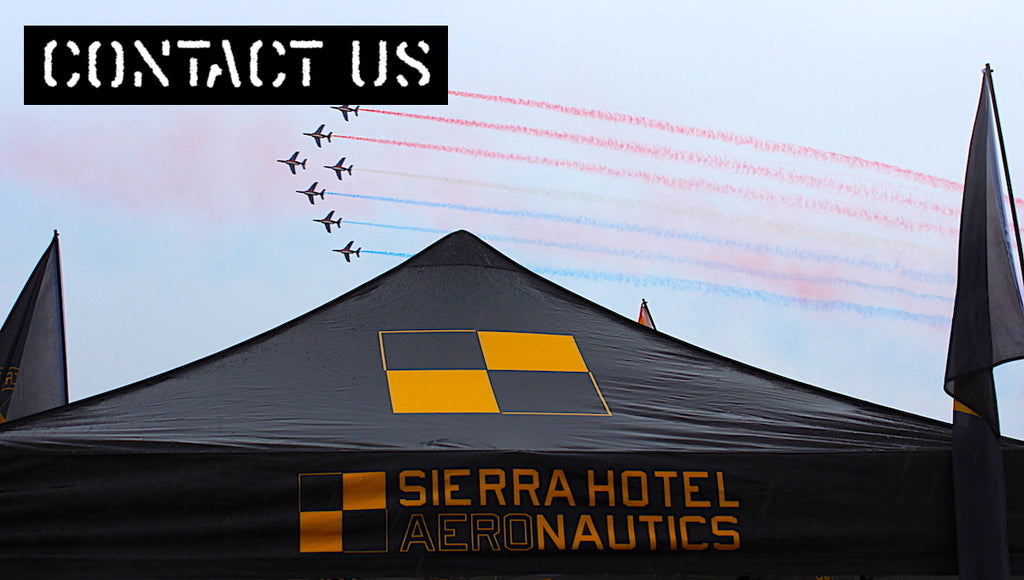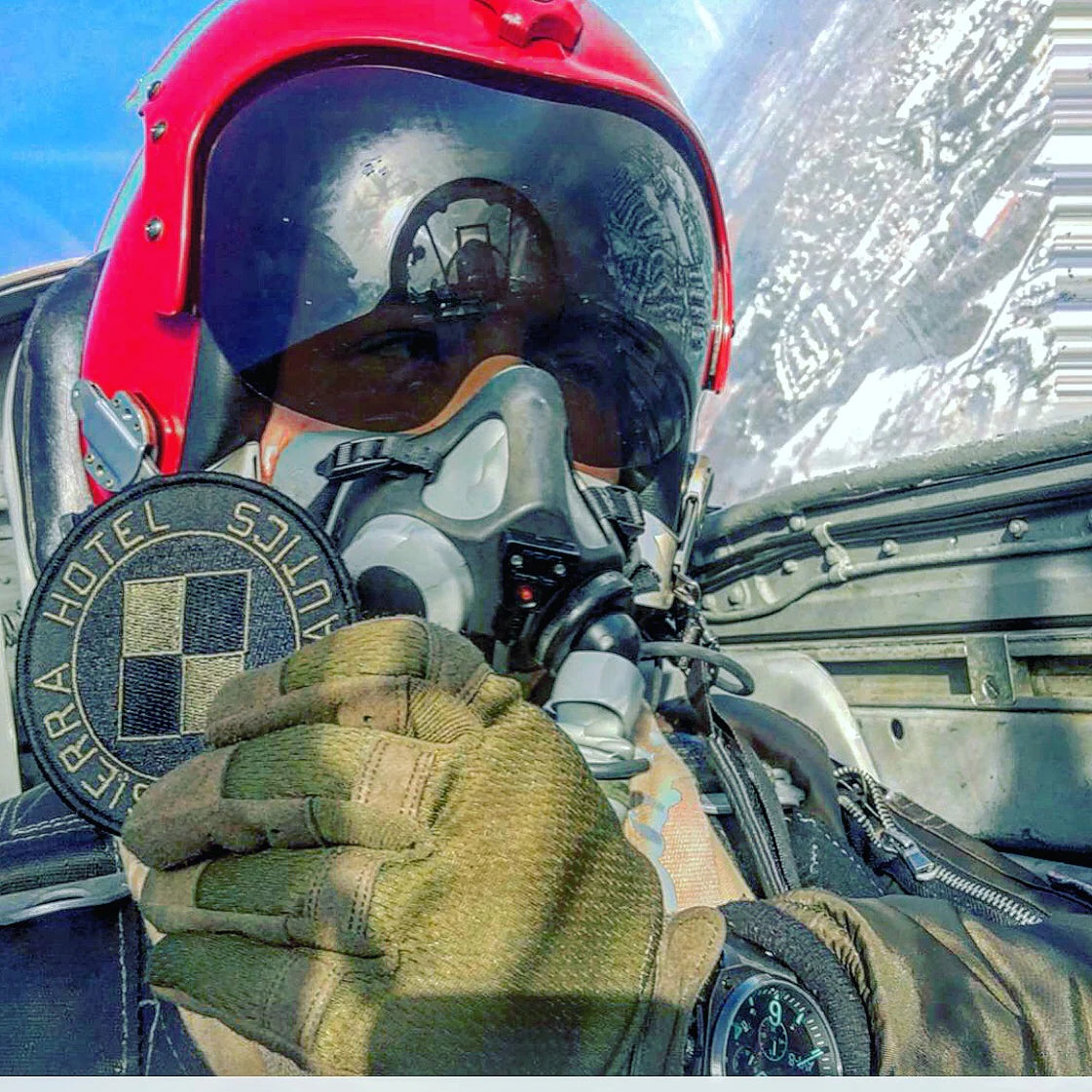.
Due to his previous flying experience, Carr advanced quickly through the flight training program and soon found himself flying the P-40 Warhawk at Spence Field, Georgia. Carr was promoted to flight officer on August 30th, 1943, and deployed to Europe in February of 1944, where he was assigned to the 380th Fighter Squadron, 363rd Fighter Group, Ninth Air Force, at RAF Rivenhall in Essex, England. The 363rd happened to be one of the first units lucky enough to adopt the new cutting-edge P-51 Mustang Pursuit aircraft.
Up until that point in his flying, Carr had never flown above 10,000 feet in altitude, but after getting his hands on the brand new out of the box North American Aviation P-51 Mustang, Carr took his trusty steed, up the long delirious burning blue, where he topped the wind-swept heights with easy grace. As he levelled off at over 30,000 feet, he fell in love with his new aircraft, and named her "Angel's Playmate.”
.
On March 8th, 1944, Flight Officer Carr managed to score his first kill, as well as the first for his squadron when Carr most aggressively chased an enemy Me109 straight down to a few feet above the ground as he smashed his trigger while firing everything he had at the enemy in his sights. Only a single bullet had actually struck the German Me109 as it tried to shake its pursuer. The Luftwaffe pilot was so shaken by the pursuit and ensuing hail of bullets, that in a moment of absolute desperation, he leaped from his aircraft, far too low for his parachute to properly deploy. The German pilot was killed on impact, with his 109 slamming into the ground seconds later. Carr was not given credit for the kill since scaring a German pilot to death is not considered a valid qualifier. Upon his return to base, Carr was further criticized by his superiors for being "overaggressive.”
In May of that year, Carr was transferred to the 353rd Fighter Squadron, 354th Fighter Group, at RAF Lashenden in Kent. Carr scored his first official kill on June 17th, while he assisted another pilot in downing an Fw190. On August 18th, Carr was commissioned as a second lieutenant.
Four months later, on September 12th, 1944; Second Lieutenant Carr's flight was returning from a successful strafing mission over a German airfield when they spotted over 30 Fw190s approximately 2,000 feet below them. On that day Carr shot three Fw190s from the sky, then escorted a fellow pilot, whose aircraft had been badly damaged, and was attempting to limp back home. Carr remained on his fellow pilot's wing all the way back to friendly territory. Second Lieutenant Carr was awarded the Silver Star for his actions that day.
On October 29th, Carr brought down two more German Me109s over Germany, officially making Second Lieutenant Bruce W Carr an Ace. Unfortunately, only 4 days later November 2nd, 1944; Carr was leading a flight on another strafing mission over a German airfield in Czechoslovakia, where, during the attack, Carr's P-51 nicknamed "Angels Playmate" was struck by enemy anti-aircraft fire. Unable to keep his aircraft aloft, Carr bailed out over enemy occupied territory.
Managing to evade capture for several days, Carr was physically exhausted, starving, and suffering from continued exposure to the elements. Carr finally decided it was better to surrender to the Germans rather than be discovered.
Carr made his way to a nearby enemy airfield with the intention of turning himself in. When he arrived at the enemy field, Carr observed a ground crew in the process of fueling and arming an Fw190. Carr kept hidden and waited for the German ground crew to leave, then snuck through the perimeter fence, and climbed into the enemy aircraft cockpit. There he quietly spent the night familiarizing himself with the cockpit gauges and controls of the Fw190, which were unfortunately, all labeled in German.
.
After an entire night of informal self-taught enemy aircraft ground school…and as dawn broke over the enemy airfield, Carr shattered the quiet morning air as he fired up the enemy fighter's engine, and hastily took to the skies westbound with absolutely no resistance from the still completely oblivious enemy forces.
Heading towards friendly territory as fast as the enemy fighter would take him, Carr was not out of the woods yet…he still had to make it back to base in an enemy fighter emblazoned with the markings of the Luftwaffe.
As Carr came across friendly lines, he was greeted with the welcome he expected as Friendly forces opened fire on his aircraft. Carr dropped to treetop level and opened up the throttle in a last mad dash for home while desperately trying to avoid being shot down.
.
After skimming the treetops for over 200 miles, Carr arrived at his home base with a non-functioning radio and no way to communicate with his base to let them know he was a friendly. Carr elected a more direct approach. Rather than slowing down, dropping gear and flying the pattern, Carr remained screaming inbound at treetop level, chopping his power and belly-landed his aircraft before the airfield defences had time to train their weapons on his aircraft.
As the Fw190 skidded across the field, military police were racing towards him, and as the aircraft skidded to a stop, Carr found himself quickly surrounded by unwelcoming friendlies. Surrounded at gunpoint, Second Lieutenant Carr was unable to convince them he was an American and with the 354th until his group commander arrived on scene and immediately recognized the Focke-Wulf pilot as one of his own.
.
On that day, Second Lieutenant Bruce W Carr became the only pilot to ever depart on a mission in a P-51 fighter, only to return in an enemy Fw190.
ADDENDUM: Sadly, although Carr was a heroic fighter pilot, it was later discovered that the story above was a fabrication when Carr himself admitted several times that most of the exciting parts of this story were a work of fiction. Carr was not shot down and on the run when he came upon the FW -- it was a planned transfer of a captured FW 190 from Linz AD, which was already occupied by the British. The event occurred on May 8th, after combat operations had already halted. It was nothing more than a massive embellishment.
On April 2nd, 1945, First Lieutenant Carr was leading a flight of three on a reconnaissance mission near Schweinfurt, Germany, when he spotted 60 German fighters flying above them. Despite the enemy's altitude advantage and being outnumbered, Carr led his flight to commence an attack that culminated with the downing of 15 enemy aircraft. Carr claimed down two Fw190s, three Me109s and a damaged sixth fighter.
This brave undertaking made Bruce W Carr the last ace in a day in the European Theater during the Second World War. Second Lieutenant Bruce W Carr was awarded the Distinguished Service Cross for his actions on that day.
.


















Didn’t happen but the tale persists.
I knew Bruce when I was secretary of the American Fighter Aces Assn. His friends in the 354th FG asked him to stop telling the story because he was never shot down and never stole a FW -190. Shortly after VE Day he borrowed a repaired 190 from a nearby RAF field in Germany and flew it to the 354th base where the landing gear collapsed on landing.
Other than that, Bruce was an enjoyable companion.
AWESOME
You are forgetting Bob Hoover. He did virtually the same thing.
Leave a comment